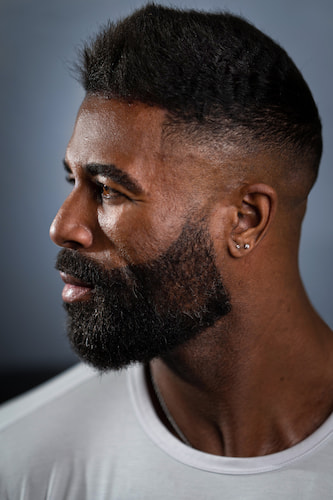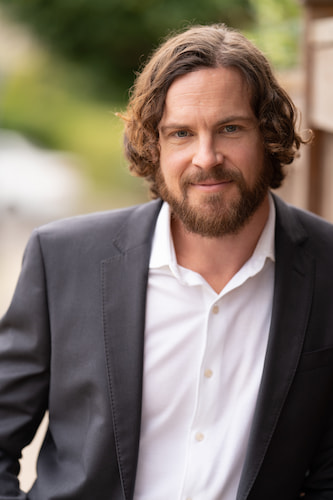Hair Transplants to fill in facial hair for a bolder, more complete look.
Hair Transplants to fill in facial hair for a bolder, more complete look.Some people including those transitioning are not able to grow facial hair, or experience patchiness. Your facial hair can help accentuate your features. A facial hair transplant is the best option to enhance the areas in which you desire more growth.
You now have the option to wear any style of facial hair you want, whether it be sideburns, beard, goatee or mustache!
The ability to grow facial hair including sideburn growth is genetic. If you are genetically predisposed to not being able to grow facial hair, or you experience patchiness, the only permanent solution is to have a facial hair transplant. There are no prescriptions or over the counter medications or ointments that will help with this issue.
Is a beard transplant permanent?
Yes, the implanted hair will be permanent and grow just as it would on your scalp where it was harvested from. It will need to be trimmed just as you would normal beard hair, as it will grow as if it was still implanted in your scalp.
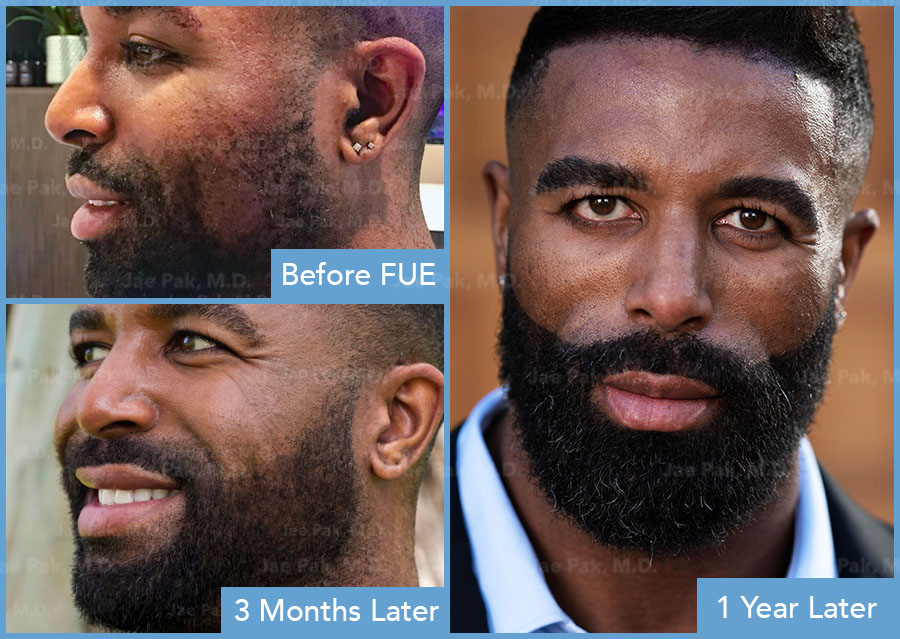
Is a beard transplant worth it?
There are no prescriptions or over the counter medications or ointments that will help with this issue. Many people struggle to grow facial hair. The ability to grow a beard or sideburns is a genetic trait that we cannot control. If you have always wanted facial hair or desired a fuller look instead of having patchy areas or areas of facial hair that do not connect, then a beard hair transplant is the right option for you!
How do facial hair transplants work?
Any type of hair transplant including facial hair surgery involves moving hair from the back of the scalp to the desired area where you wish to fill in. Hairs are harvested from the back of the head or sometimes other areas such as below the chin or the neck area, and implanted in the new area including sideburns, cheeks, chin and above your lips.
Is a beard transplant safe?
Yes, because your own hair follicles are used, the implanted hair reacts extremely well to being implanted in the face on the cheeks, mustache and goatee and sideburn areas. The key to a great outcome is finding the right doctor. Jae Pak, M.D. works with patients daily to restore eyebrows, beards, and hairlines with artistically natural looking results!
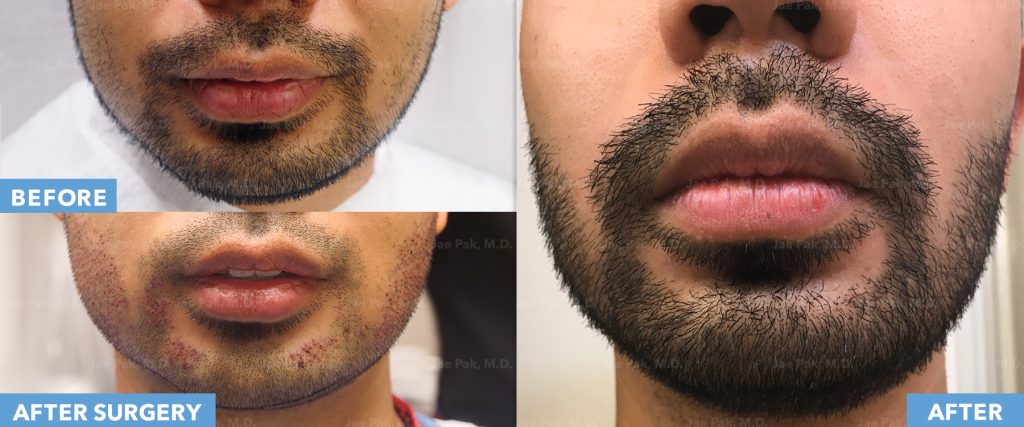
How is the donor hair removed for facial hair implantation?
There are two methods used to remove or “harvest” donor hair from the back of the head to the face including Follicular Unit Transplantation (FUT) also known as STRIP or Follicular Unit Strip Surgery (FUSS), or Follicular Unit Excision (FUE).
Both methods only refer to how the hair is removed, the placement of the hair or implantation is the same for both FUT and FUE. With the FUT method, a strip of skin is removed from the back of the head and then the hairs are removed from the skin and cut into individual hair follicles which are then implanted in the recipient area. A linear scar will be left in the back of the scalp. However, for those that wear their hair longer in back, the scar cannot be seen.
The FUE method is the removal of the hair follicles individually, so only tiny “pin prick” size scars are left scattered throughout the back of the head and are virtually undetectable. This is a great option for those who wish to wear their hair very short and do not want an easily visible scar exposed. There are different benefits associated with each type of harvesting method and your doctor can help you weigh the pros and cons.
How do you implant the hair to the face?
Jae Pak, M.D. works with every patient to create their desired look. He will artistically custom design the most natural looking facial hair that works best with the patients features. He will draw for the patient where the hairs will be implanted before the surgery begins and make sure the patient is happy with the design.
Once the procedure begins, and the hair grafts have been prepared for hair implantation, Dr. Pak will create “sites”, or tiny incisions for the hairs to be placed in, or implanted.
The doctor will artistically plan the location of each site so that the individual hair follicles are going in the correct direction, at the right angles and are distributed in the correct places to have the best possible results. A beard or any kind of hair transplant, when performed by an experienced and skilled surgeon should be undetectable.

How many hairs will I need for my beard?
Factors such as color, quality and texture of the donor hair as well as color of the skin and the contrast between hair and skin color will all affect the number of hair grafts needed for a successful outcome.
As an example, a person with very thin, fine hair will need more hair grafts implanted to fill the same area as a person with thick, curly hair. Coarser, curlier hair will also create the appearance of the fuller beard, then thin, finer hair.
At Jae Pak MD Medical, we will customize your procedure based on your goals, features and hair type.
As an example, if a person has brown, medium textured hair with medium-toned skin, the approximate amount of hair grafts needed for a facial hair transplant are listed below.
Filling in sparse or patchy areas: 100 – 1000 grafts
Mustache: 500 – 750 grafts
Goatee to connect missing gaps: 100 – 500 grafts
Full beard: 2,500+ grafts (Depending on the desired fullness, more than one surgery may be required. The first to create the outline and basic thickness of the beard. The second to add additional thickness to the area is the patient’s goal is to have a fuller beard area.)
Sideburns on both sides of the face: 500 – 1000 grafts
Can a transman have facial hair?
Yes, a ftm can grow facial hair on their own through taking testosterone. Jae Pak, M.D. often works with members of the transgender community to fill in or create natural looking masculine hairlines, mustaches, beards, sideburns and goatees.
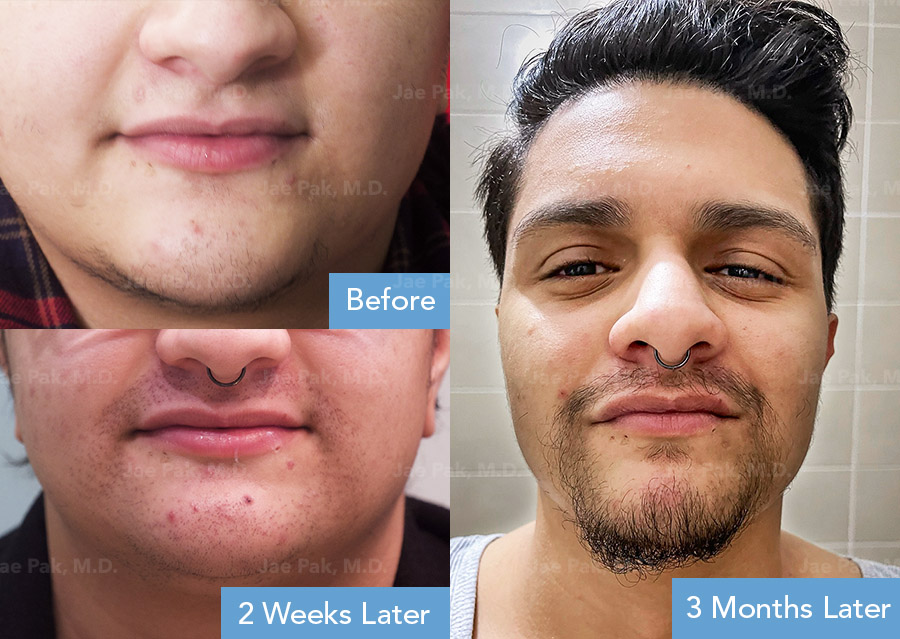
Can I accomplish my goals in one surgery for a beard transplant?
At Jae Pak MD Medical, one surgery is always our goal. However, depending on the desired fullness of our patients, sometimes an additional procedure is required. Hair grafts cannot be implanted on top or too close to each other or existing hairs. As a result, sometimes once the grafts are grown in, the doctor can go back and find room for additional grafts to be added without compromising the existing or natural hairs around that area. It is important to discuss realistic goals with your doctor. Your hair and skin texture and color will also be a factor in the number of procedures needed as mentioned above.
Can you take hairs from my arm, chest, or other parts of my body?
Hair can come from anywhere on your body for implantation, however, the quality and growth of the hair should be similar to facial hair for best results. The hair on the back of the scalp most closely matches facial hair, and is therefore the best to use during a facial hair transplant. Dr. Pak is sometimes able to use hair from under the chin and on the neck , but the amount of hair available from those areas is limited.
How quickly will my beard transplant hairs grow?
After a hair transplant procedure, you will begin to see growth after approximately six months. Once the transplanted hair grows in fully, your hair will grow as it would on your scalp. The facial hair will need to be trimmed regularly to your desired length.
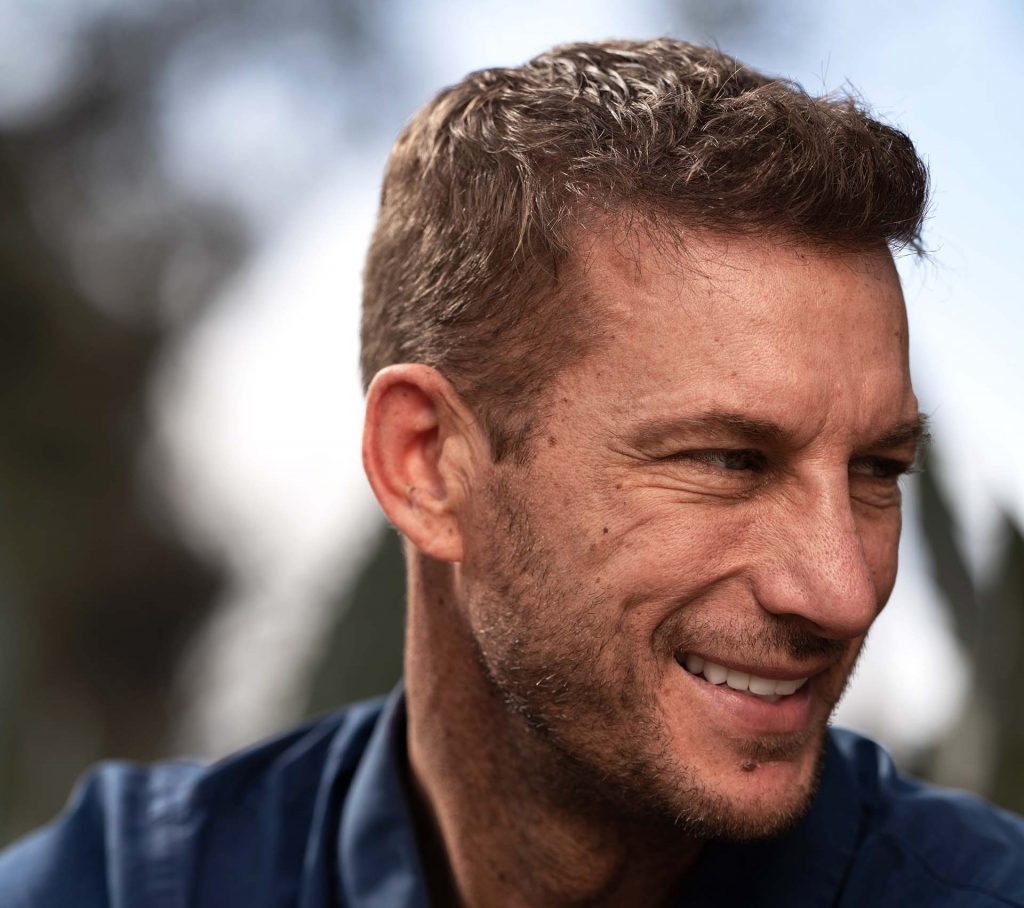
How do I take care of my beard after a transplant?
At Jae Pak MD Medical, we offer a complementary post-operative check and hair wash. At that time we will go over how best to care for the implanted area. This will include giving you special shampoo and oil to assist with healing. You will be provided with the doctor’s mobile number in case you have questions after hours.
When can I go back to work or be seen in the public after a beard transplant?
Although there may be some redness or slight swelling, most patients can return to work or normal activities after a few days following their transplant. It is rare for the redness to persist for more than a week. If you have very fair or sensitive skin, the redness may persist slightly longer than a week.
How soon will I see the results after my beard transplant?
Each patient is different. Some may see results after four months-six months and others may take up to nine months to see growth. Complete results cannot be evaluated until a full twelve months after a procedure.
Patient Story
Beard Transplant Results
Bodybuilder, model and businessman gets the beard, eyebrows and hairline that he has always wanted!
Find out if a Beard Transplant is right for you.
Speak with Jae Pak, M.D. today!
